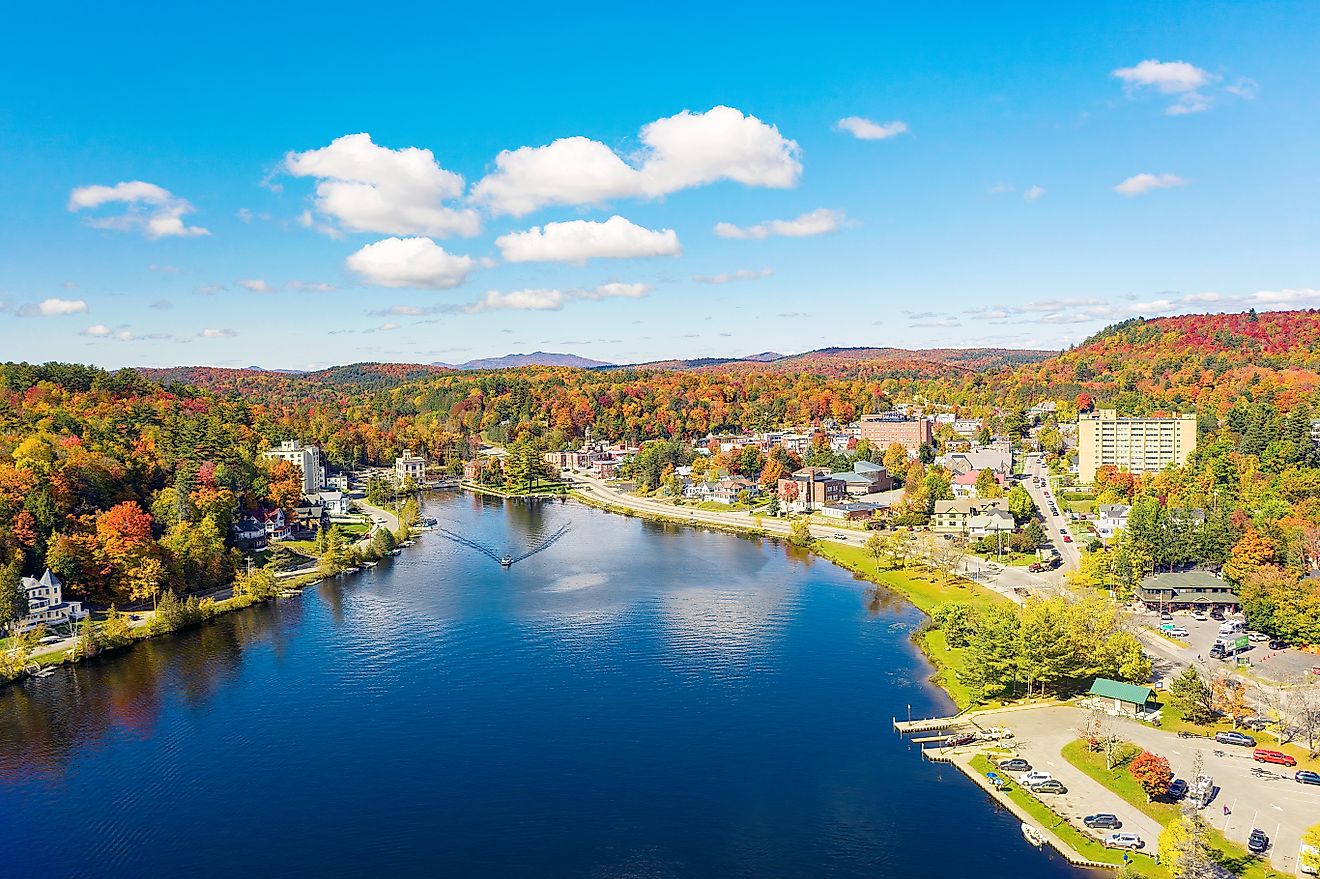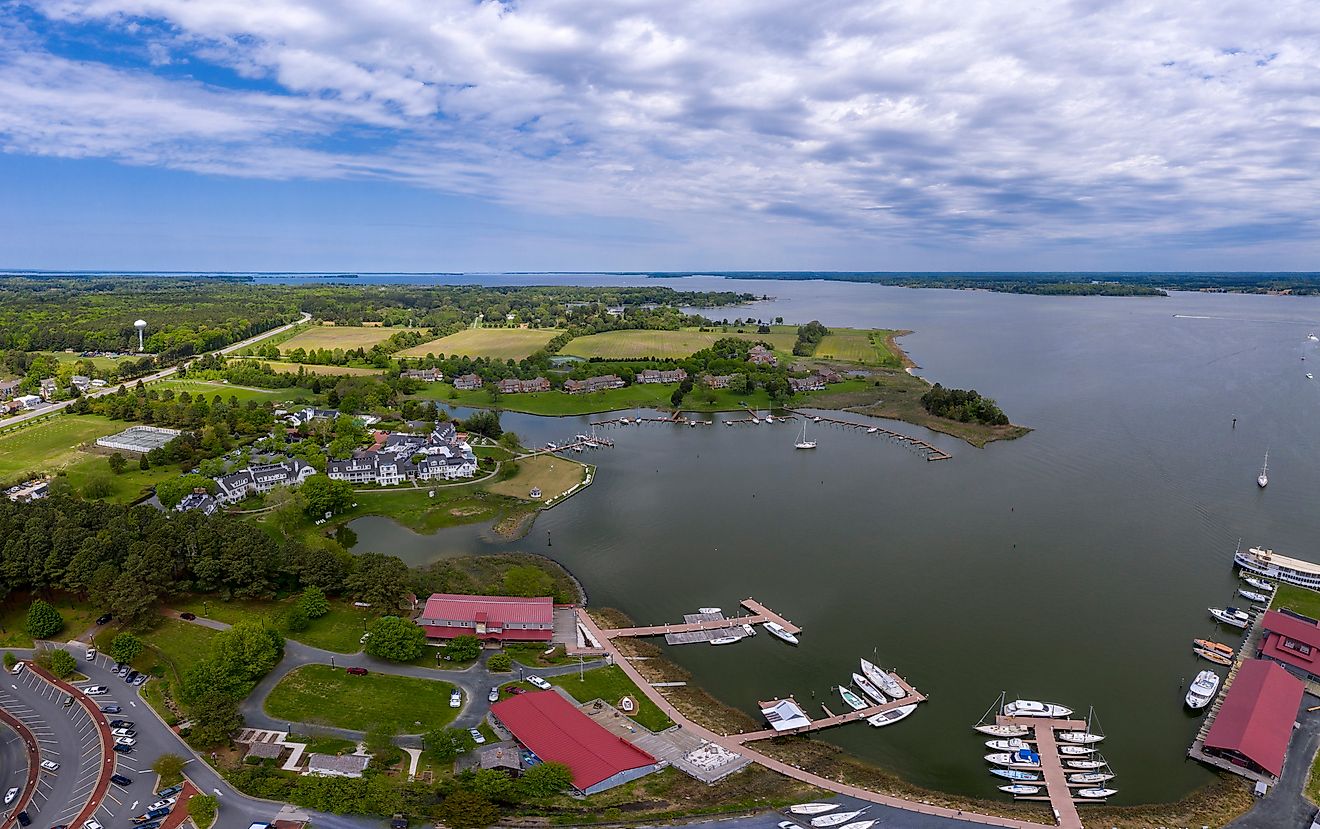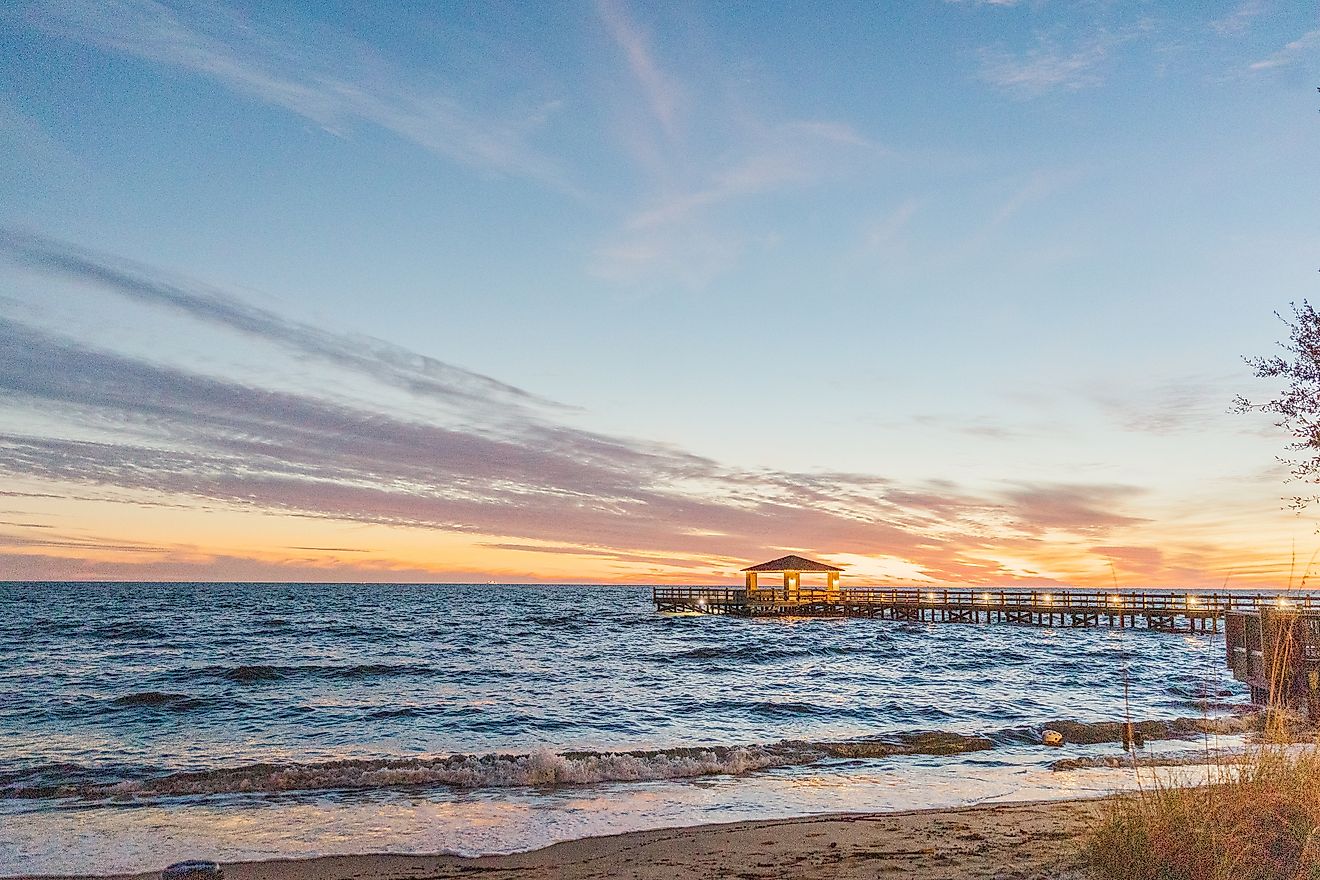
White Sands National Park Glitters Like Snow Yet Blazes With Heat
The desert gets a pretty unfair rap. Hollywood may want us to believe every desert is a barren expanse of cactus-pocked flatland, or perhaps an endless sea of shifting yellow sand, but there’s much more to this fascinating biome than we’ve been taught to expect. Case in point: New Mexico’s one-of-a-kind White Sands National Park.
Sure, you’ll get plenty of sand here. Before you know it, it’ll take up residence in every item of your clothing. But that sand is unlike anything you’ve ever seen. Piled up in glistening white dunes, the gypsum sand of this remote southern New Mexico dunefield gives the desert a totally new aesthetic. One thing everyone can agree upon: no matter what you’re expecting, White Sands is a looker.
So how did this most unconventional of desert parks come to be? The answer is as unexpected as the distant sight of dunes that glitter like alpine snow even as the Southwest heat blazes.
Geography of White Sands National Park

White Sands National Park isn’t an easy place to end up by accident. In a far-flung corner of southern New Mexico, you’re far from any major cities — or even larger towns. If you need even more evidence of its isolation, know that it’s the only National Park that might announce an unexpected closure for a missile test. The nearby White Sands Missile Range is a military test facility - chosen partly for its isolation from major settlements - and occasionally, those tests prompt the closure of the park.
Once you find yourself there, though, you should know that White Sands isn’t only hard to get to. It’s also the world’s largest gypsum dunefield and one of the only landscapes of its kind anywhere in the world. And that’s all thanks to the event that shaped so many of North America’s unique landscapes: the last Ice Age.
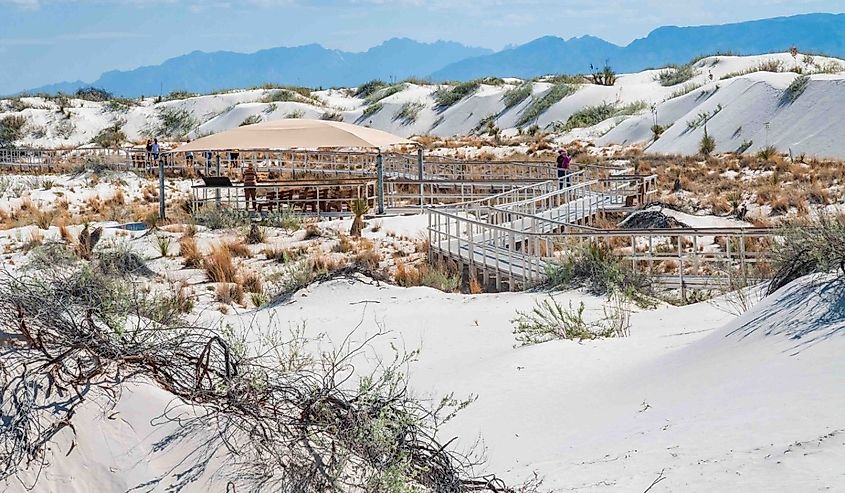
Between 24,000 and 12,000 years ago, much of the world was covered by glaciers. And while those glaciers didn’t extend all the way down to the far south of New Mexico, a cooler climate meant much more moisture in this region than there is now. In that wetter climate, water was able to move gypsum from the surrounding mountains into a now-dry lake.
As that lake evaporated, the continual processes of weathering broke the left-behind gypsum down into tiny crystals of sand. The wind did the rest of the work, blowing those grains into the dune formations we see today. As a result, White Sands National Park is the world’s largest dunefield of this kind. Its other natural features include Lake Lucero, a basin that seasonally fills after heavy rains.
But although White Sands National Park looks like an ecosystem of its own, it’s part of a much larger biome. It’s actually situated in the northern reaches of the Chihuahuan Desert, which spans three U.S. states and five in Mexico. As a whole, the Chihuahuan Desert is known for its biodiversity, extreme seasonal variations, and relatively wetter climate than other North American deserts. You’ll get blazing-hot summer temperatures in the hundreds here, but winter nights can dip below freezing.
Park History
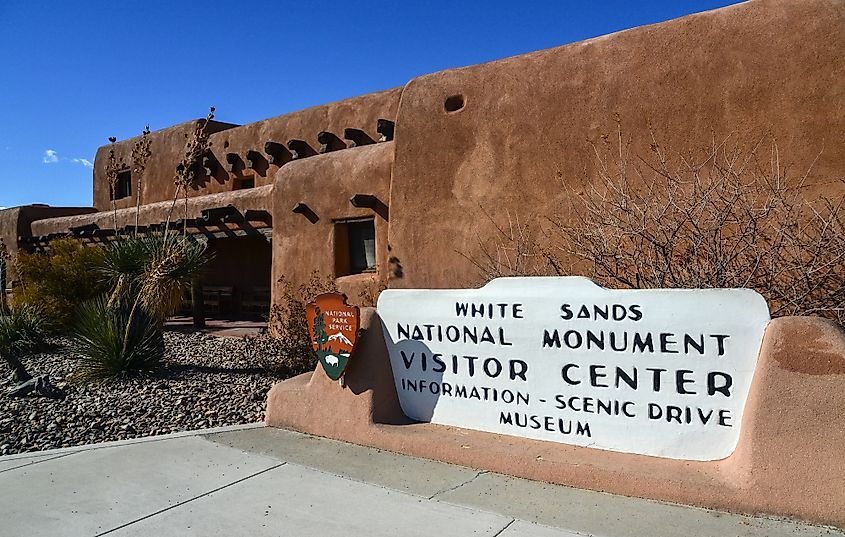
The dunefield that is now White Sands National Park has a human history spanning thousands of years: some of the world’s oldest fossilized footprints are located in the park, predating the presence of the dunes we see today. However, it wasn’t until about 1870 that local residents began to think about the dunes as a valuable ecosystem and tourist attraction. In fact, the mining industry took an interest in the dunes and would likely have set up shop there if the gypsum sand had greater economic value.
But in the 1870s, scientific research began to spark increased interest in the area’s beauty and scientific value. About 60 years later, tireless local advocates succeeded, and the area was designated a National Monument in 1933. Tourism to the area boomed. Then, during the wartime years of the next decade, the federal government created a military base and missile testing ground adjacent to the park. To this day, the western edge of the park’s territory overlaps with the military base, and the two entities share use of that land. That’s also why the park occasionally closes for safety reasons during tests.
White Sands National Park was not redesignated as a National Park until 2019, making it the second-newest of the 63 current parks. (For your trivia needs, the newest is the 2020-designated New River Gorge National Park in West Virginia.)
Park Features
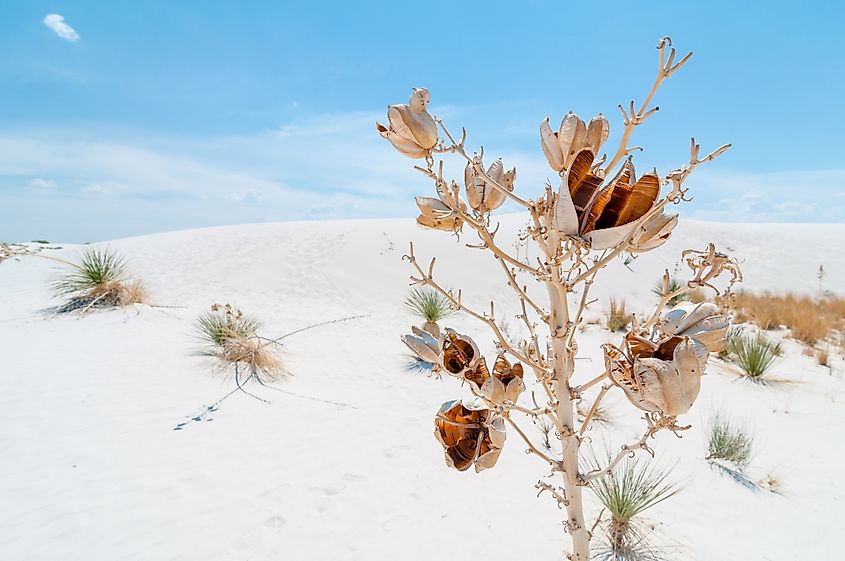
White Sands National Park is not a particularly varied landscape. You’ll get what the name promises: the largest field of white-sand gypsum dunes on Earth. In the summer, you’ll see playas, or low-lying basins where the shallow groundwater beneath the dunes seeps above the surface. But what you’re really here to see is a vast expanse of white dunes, and that’s what ultimately makes this park so unique.
There are other parks where sand dunes are the focal point (Great Sand Dunes in Colorado) or a feature (Death Valley National Park is famous for them). But none have the striking beauty of White Sands National Park’s crystalline hills of gypsum sand. Enjoying that novel scenery is what draws most visitors to the park. However, one bizarre anecdote from the park’s history deserves a mention in any discussion of the unique features of this park.
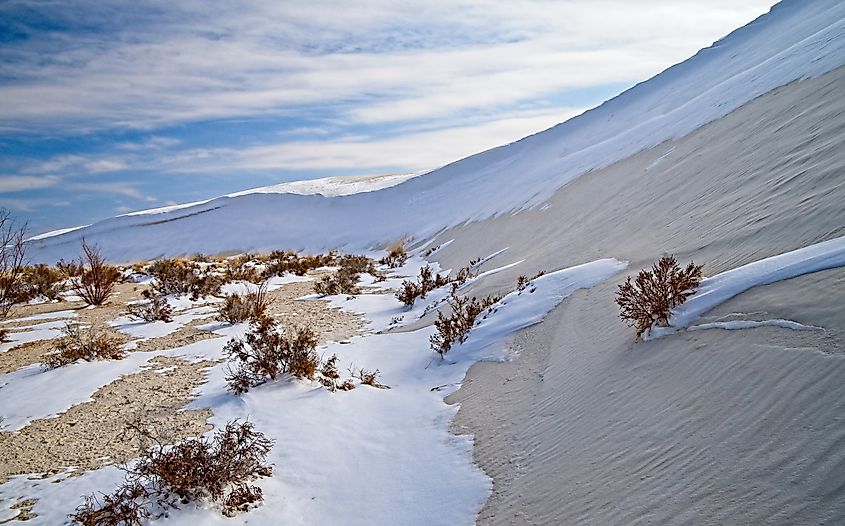
The introduction of non-native species is a hot topic in conservation, and the National Park Service is no stranger to such issues. But White Sands National Park has a particularly unusual invasive species problem on its hands.
See, White Sands isn’t a park you visit for the wildlife. While small mammals and countless reptile species reside there, it isn’t the place to go for what conservationists call “charismatic megafauna”: large, sought-after species like bison, wolves, or bears that people will travel to see. So in the 1960s, those Game and Fish officials got to thinking that the area around the White Sands Missile range ought to have a big-ticket species of its own.
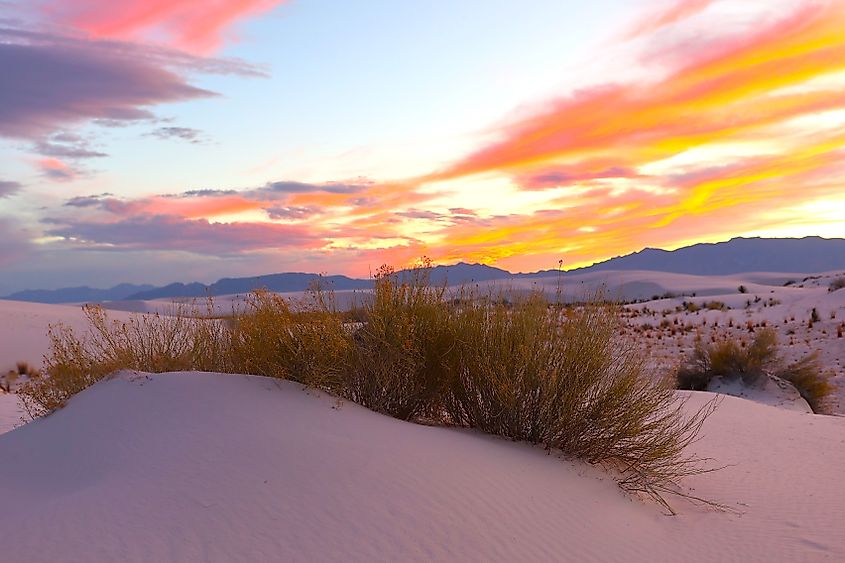
Various animals were considered for the purpose, and the one that was finally chosen in 1969 was the African Oryx, or gemsbok. Native to the Kalahari Desert, this 400-pound-plus ungulate isn’t deterred by a harsh, arid climate — and with no natural predators in New Mexico, its numbers exploded. Only five years after the project began, oryx hunts were opened to keep the population in check and prevent harm to native species. They haven’t really done the trick, though, so park officials erected a fence around the park’s boundaries in 1996 to keep oryxes out.
While you’re unlikely to stumble upon an oryx at White Sands National Park, you never know, and the bizarre story of how they came to live in the area is one of the park's more unique.
Things to Do

You don’t need snow to sled: that’s one lesson you’ll learn quickly at White Sands National Park, where you won’t make it far before you hear the thrilled cries of fellow visitors sliding down the dunes in disc-like sand sleds. Sleds are available for rental at the visitor’s center if you’d like to join in.
Other than sledding, the park’s single most popular activity is likely the scenic eight-mile Dunes Drive. Winding through the dunes into the heart of the park, it’ll give you a good taste of the park’s scenery without the effort of trudging through piles of shifting sand.
But if hoofing it is more your style, there are five hiking trails in the park that you can enjoy. The easy Interdune Boardwalk (0.4 miles) and Dune Life Nature Trail (1 mile) both offer a more in-depth look at the park’s ecology and scenery without demanding too much. If you’re looking for something more strenuous, the five-mile Alkali Flat Trail will give your calves a serious workout as you follow the trail markings up and down the dunes.
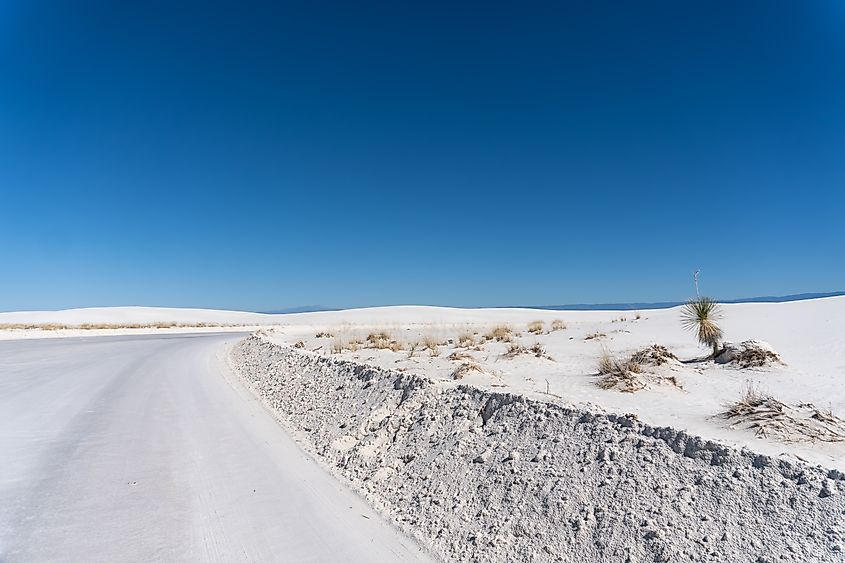
But don’t feel beholden to the trail markers: unlike most parks, White Sands encourages off-roading hikers to explore. If you’re confident you can navigate safely back to the parking lot, you’re free to go off-trail and explore the dunes however you wish.
While backcountry camping used to be possible, it’s not allowed as of August 2025, as campsites are being renovated. If you’re interested in camping, check the National Park Service website for updates.
Few National Parks can truly be said to be as unique as White Sands. You’ll find nothing else like it in the U.S., and few comparable locations anywhere in the world. But beyond that, it’s just fun. Something about the sun and sand brings out the kid in almost everyone. Spend a day romping through glittering dunes in this far-flung gem, and you’ll come away with a profound appreciation of how much excitement and joy nature can give us when we decide to protect it.





